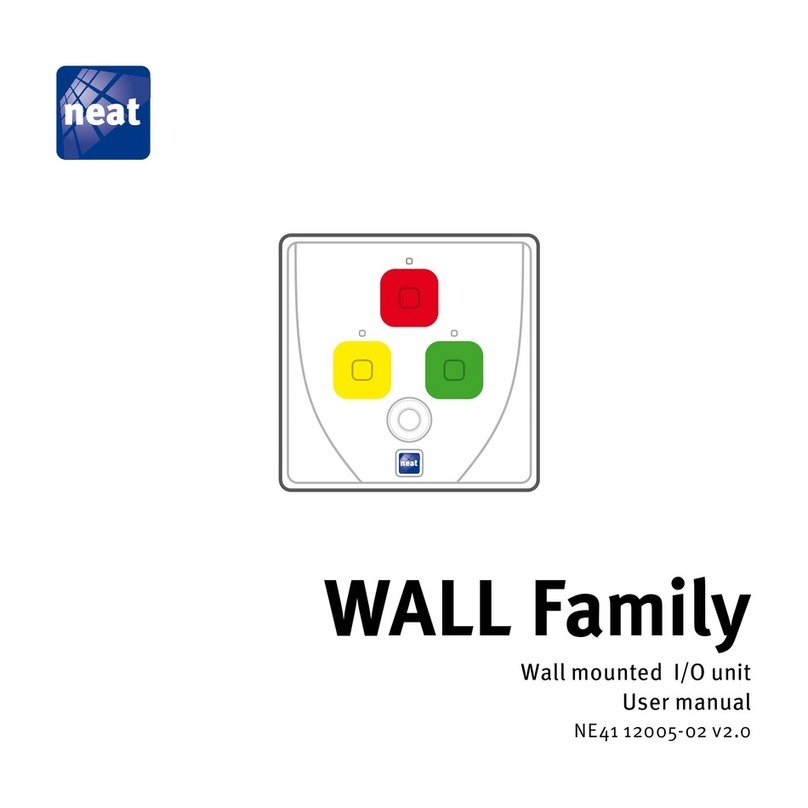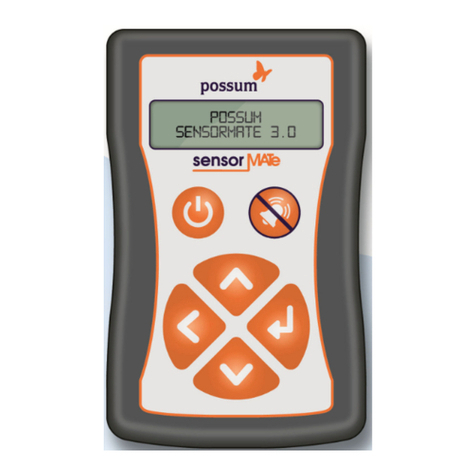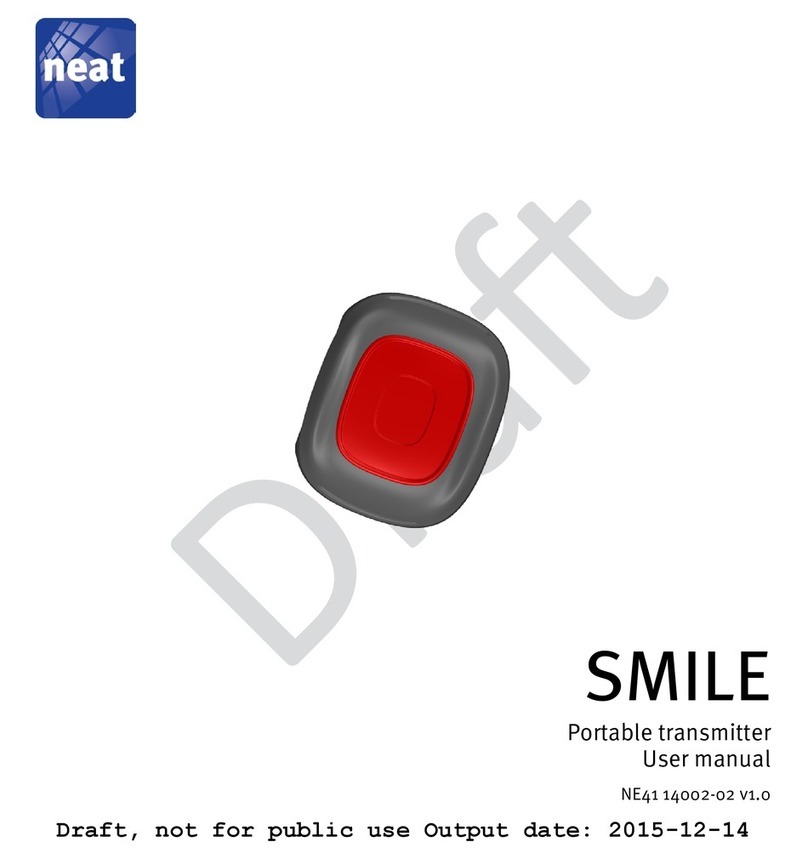
5
SMILE User manual NE41 14002-02 v2.0
1 About SMILE
The SMILE Family is a range of products meant for the care sector,
either in a home care living or in a warden facility. The SMILE Family
consist of two portable triggers, SMILE and SMILE ID.
The term SMILE or SMILE unit will be used for the trigger in general
and if not stated otherwise it refers to the standard SMILE.
1.1 SMILE
SMILE is a portable alarm trigger which must be con-
nected to a receiver (e.g. NOVO Homecare Phone, TREX
2G Portable Transceiver, D-TECT and D-SERVER System)
to be able to send alarms.
1.2 SMILE ID
SMILE ID is based on the standard SMILE but with a grey
appearance and is also equipped with an RFID circuit
which is trigged by the magnetic elds created by a
D-POS Antenna or a LOOP Antenna.
SMILE ID also has a built in accelerometer which enbles
the possibility to monitor unit inactivity.
1.3 Intended use
The SMILE is intended for use in homes and wardens to provide
a feeling of security with the possibility to dispatch alarms in the
event of an accident.
SMILE ID is intended to be used in the care sector for monitoring
persons who demands extra attention or nursing by enabling posi-
tioning in a D-POS, DPOS-II or D-SERVER system.
1.4 General Use
SMILE is to be carried by the user, either in a necklace or on a wrist-
band. An alarm button enables the possibility to trigger an alarm
manually. The alarm is trigged by a light touch on the red alarm
button and the alarm is acknowledged by blinking green.
More detailed information about the functions and use of a SMILE-ID
can be found in D-POS II Technical handbook NE41 17030-02.































